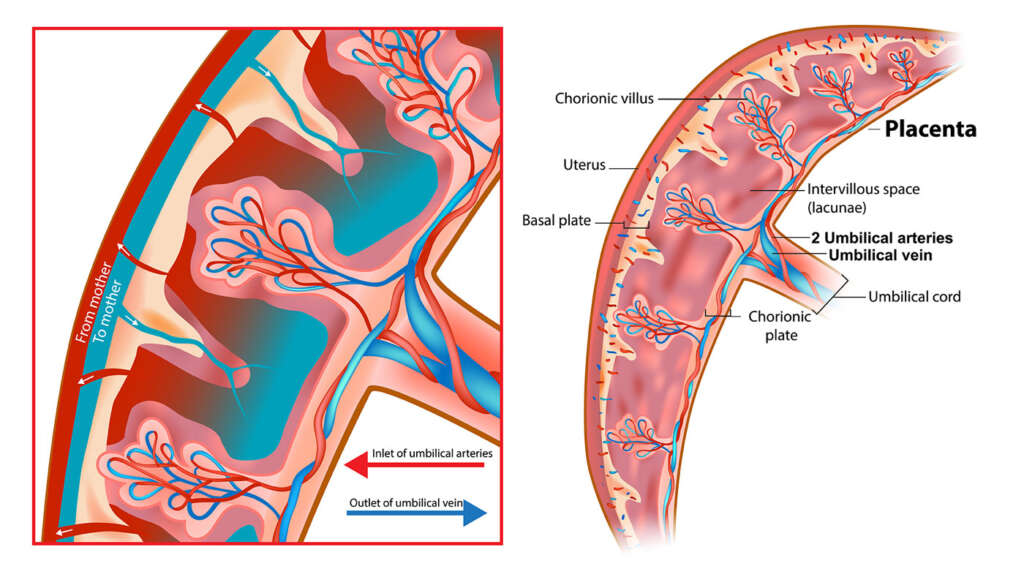What is Birth Tissue?
Birth Tissue, sometimes referred to as postnatal tissue or after birth, is made of the placenta, the amnion and chorion layers (amniotic sac), the umbilical cord, and the amniotic fluid. This vital organ is what connects the mother with her child to aid in development and meet nutritional needs. We do not currently collect the amniotic fluid, but we do use the placenta, the umbilical cord, and the membranes that are normally treated as medical waste and discarded for their healing properties.

The Human Placenta: A Lifesaving Connection
The placenta is a remarkable organ that develops during pregnancy, serving as a vital link between the mother and the developing fetus. Here’s what you need to know:
Formation and Structure:
Shortly after conception, the placenta begins to form within the uterus.
Structurally, it consists of maternal tissue (from the mother’s uterine lining) and fetal tissue (from the developing embryo or fetus).
Functions:
-
- Nutrient Exchange: The placenta facilitates the transfer of essential nutrients (such as oxygen, glucose, and amino acids) from the mother’s bloodstream to the fetus.
- Waste Removal: It also helps remove waste products (like carbon dioxide and urea) from the fetal blood.
- Hormone Production: The placenta produces hormones (such as human chorionic gonadotropin, progesterone, and estrogen) crucial for pregnancy maintenance.
- Immunological Barrier: Acting as a protective barrier, it prevents harmful substances from reaching the fetus.
Postpartum (after delivery) Fate:
After childbirth, the placenta is expelled (commonly known as the “afterbirth”).
Interestingly, its purpose doesn’t end there—it continues to have therapeutic potential.
Placenta Donation:
Donating the placenta is an altruistic act.
The placenta contains amniotic tissue, which has remarkable healing properties.
Applications include wound coverings, ophthalmology, orthopedics, dentistry, and research.



